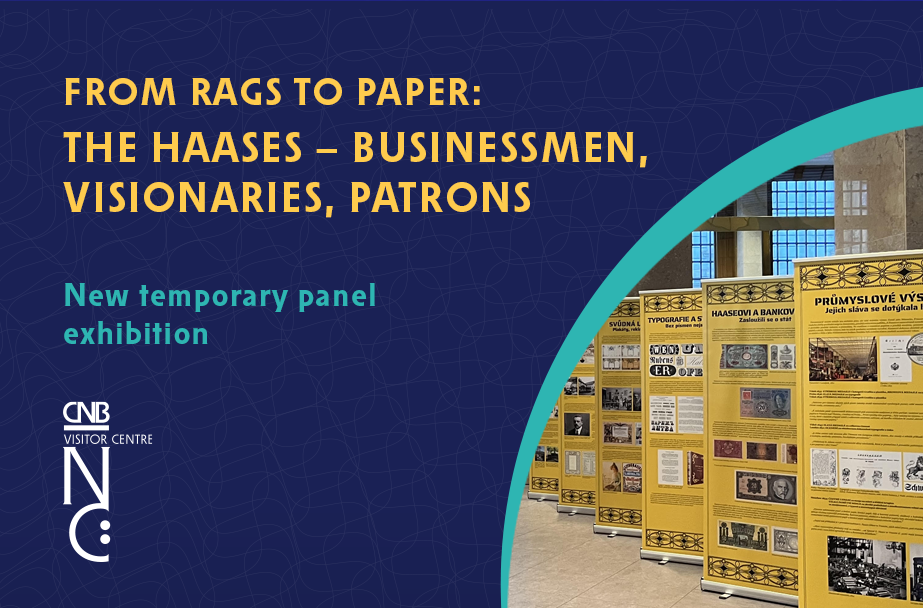Exhibition on the history of the Haase printing works

From Rags to Paper: The Haases - Businessmen, Visionaries, Patrons
The birth of the Czech currency is associated first with adhesive stamps (affixed to banknotes of the Austro-Hungarian central bank to identify them as Czechoslovak notes) and subsequently with banknotes, which were produced for Czechoslovakia by a whole range of printing works. The most prominent of these was the A. Haase printing works at Anenský dvůr in Prague. It printed 20 heller and 50 heller stamps for the interim banknotes and, later on, four of the nine denominations of the first-issue banknotes. Its banknote design work was not limited to Czechoslovakia, but extended as far afield as Lithuania, for which it printed the entire first-issue series of banknotes.
The story of the Haase family, which, in the late 18th and early 19th century, founded not only a general printing works in Prague, but also a paper mill and engineering works in Vrané nad Vltavou, is told in a temporary travelling panel exhibition From Rags to Paper: The Haases - Businessmen, Visionaries, Patrons put together by a team from the Stará škola (Old School) club in Vrané nad Vltavou. The exhibition presents images from the history of printing and typography, in particular Haase's celebrated products. Visitors can then view the full range of Czechoslovak stamps and notes produced by the company in the CNB's Prague People and Money exhibition.
The From Rags to Paper: The Haases - Businessmen, Visionaries, Patrons exhibition, which is based partly on sources from the Czech National Bank Archive, is open to the public at the CNB Visitor Centre from 6 February to 22 March 2024 during normal opening hours (Tuesday to Friday from 9 a.m. to 5 p.m. and Saturdays from 10 a.m. to 6 p.m.).



